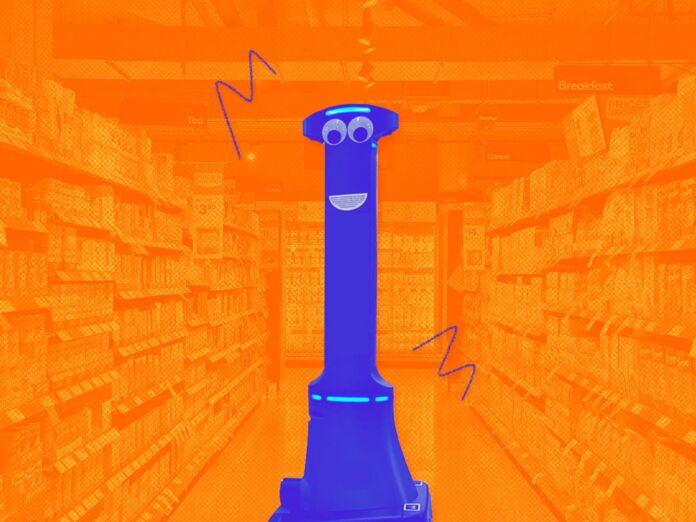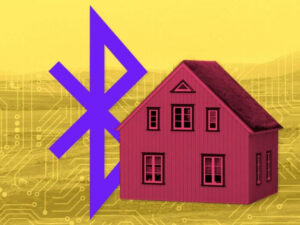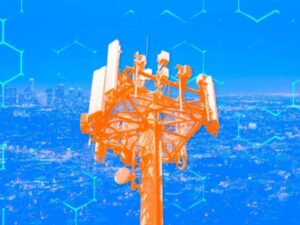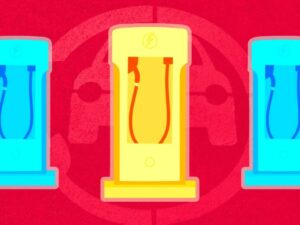
Possibilities in mechatronics significantly widened due to the Internet of Things (IoT). People are aggressively exploring options that combine the two, often with impressive results. Here are five industries that frequently use IoT mechatronics. They show why so many organizations can benefit from this merging of technologies.
“Possibilities in mechatronics significantly widened due to the Internet of Things (IoT).“
-Emily Newton
1. Manufacturing
The manufacturing industry has arguably received some of the most significant and ongoing benefits from IoT mechatronics. Industrial robots, quality control systems, and assembly lines are some of the many manufacturing staples that run with mechatronics principles. Once IoT technologies became more widespread, it was easy for industry leaders to take advantage of both these technologies.
The Internet of Things supports improved automation, better data collection, and enhanced visibility, among other things. Manufacturers can use industrial robots to streamline workflows or install smart sensors on factory equipment to get alerts of technical issues before failures occur.
IoT technologies also improve assets built with mechatronics, such as the CNC machine. In one case, researchers attached smart sensors to a milling machine used to make a turbomachinery component.
Those involved with this pioneering project developed an intelligent and flexible process control system that gives manufacturers better oversight. Also, because this innovation uses cloud technology and the 5G network, it can process and send data in nearly real time.
Manufacturing decision-makers who continue exploring exciting options like these will undoubtedly have chances to pursue new opportunities. When that happens, their businesses will grow and become more competitive, even during challenging marketplace conditions.
2. Retail
The retail sector has rapidly pursued new technologies. That has helped leaders adapt to changes, particularly as traditional brick-and-mortar fall out of favor and customers demand increasingly high-tech upgrades to their in-store shopping experiences.
One compelling application of IoT mechatronics for retail involves robots. These machines can typically sense their surroundings, making them safe for use during business hours. Retail leaders often invest in these products to relieve existing bottlenecks or achieve greater output without hiring more workers.
In a recent example, BJ’s Wholesale Club implemented retail robots in all its 237 locations. These robots move through the aisles several times daily, collecting data about whether items are in stock, priced correctly, and on the right shelves. The robots provide these details in real time, and people can review the statistics without being at physical locations.
Modern drones also increasingly use IoT mechatronics technologies. IKEA now has a fleet of 100 drones for stock-taking outside business hours (Roth, 2023). Each drone can capture images, videos, and 3D-depth details about the products stored in a warehouse. Using this technology helps IKEA cut costs and improve worker well-being. These drones can even automatically return to their charging stations when needed.
Retailers must continue exploring options like these to keep succeeding in a rapidly changing industry. Shoppers can now pick up their purchases from the curb or by visiting in-store lockers. If they see empty shelves where the products they want should be, they will likely visit another store or buy the desired items online.
3. Packaging
Packaging industry decision-makers have rapidly pursued digitalization strategies to ensure they can keep providing the services and efficiency customers want. For example, digital packaging solutions support faster order fulfillment and improved design accuracy.
Mechatronics has long been highly applicable to the packaging industry. It speeds workflows by feeding products into machines, putting packages into the correct orientations, or quickly changing a box’s size or format without requiring production stoppages. Many companies are also adding IoT to their packaging equipment, which enables better visibility of production volumes, possible machine problems, and more.
Combinations of IoT and mechatronics should become even more prominent during the foreseeable future. That’s particularly likely due to the popularity of unboxing videos, which typically get more attention when the packaging is visually appealing, has creative design features, or both.
4. Banking
The ATM is an excellent example of mechatronics principles at work. It uses mechanical engineering, sensors, and actuators to accept a customer’s card and verify the details. It then provides them with the correct amount of cash based on what they input via the keypad.
However, IoT technology is also extremely useful for ATMs. It could tell operators things like how many people typically use the ATM daily, when the busiest periods are, and how much the average customer extracts per visit. Smart sensors could also flag attempted theft or alert the companies managing the machine that it’s running low on funds.
In one case, researchers proposed an IoT system that enabled a progressive anti-theft system on an ATM. It included a camera to capture details of a robber’s face and an alarm system to warn the thief and alert passersby. Moreover, if the criminal managed to open the part of the ATM that held the money, they’d get sprayed with a gas that would render them unconscious.
ATMs are also getting more feature-filled. People can do more than withdraw funds or make deposits. They can often send money to others, pay their bills, and buy cryptocurrency or gaming credit. Relatedly, many banks are dramatically cutting the number of on-site workers that would have ordinarily assisted customers in dealing with these things. Sometimes, customers go to retail ATMs instead of those inside their bank branches.
5. Healthcare
Defibrillators and pacemakers are some of the most common examples of mechatronics in healthcare. The medical industry has become increasingly modernized, and people have explored creative ways to tap into the potential of IoT mechatronics. For example, surgeons perform operations remotely while robots navigate hospital hallways to kill bacteria. Additionally, many hospitals use patient-monitoring devices that allow individuals to complete much of their recovery at home.
One real-life case of IoT mechatronics in action came when fourth-year engineering students visited a hospital and witnessed the challenges of patients who could not speak or use signs to tell healthcare workers what they needed. They used that experience as inspiration for creating a gesture-based IoT sensor system that people wear on their hands.
The Internet of Things can also gather statistics about patients’ vital signs and show how often they need assistance during a particular day. A feature allows a thirsty patient to request that the system slowly dispense water into their mouth. After development and testing, the students filed a patent application for their innovation.
IoT Mechatronics Helps Industries Succeed
These thought-provoking examples show how IoT mechatronics can aid in meeting goals across various industries. Although it takes time for leaders to decide how to implement the relevant technologies, these efforts are usually worthwhile because they pay off in the long run.
- SEO Powered Content & PR Distribution. Get Amplified Today.
- Platoblockchain. Web3 Metaverse Intelligence. Knowledge Amplified. Access Here.
- Minting the Future w Adryenn Ashley. Access Here.
- Source: https://www.iotforall.com/iot-mechatronics-give-a-huge-boost-to-these-5-industries
- :has
- :is
- :not
- :where
- $UP
- 1
- 100
- 2023
- 5G
- 5g network
- a
- About
- Accept
- Achieve
- across
- Action
- adapt
- Additionally
- ADvantage
- After
- Aid
- alarm
- Alert
- alerts
- All
- allows
- also
- Although
- among
- amount
- an
- and
- Another
- appealing
- applicable
- Application
- ARE
- AS
- Assembly
- Assets
- Assistance
- At
- ATM
- ATMs
- attempted
- attention
- automatically
- Automation
- average
- Bacteria
- Bank
- Banks
- based
- BE
- became
- because
- become
- been
- before
- being
- benefit
- benefits
- Better
- Bills
- boost
- both
- branches
- built
- business
- businesses
- buy
- by
- camera
- CAN
- capture
- card
- case
- Cash
- challenges
- challenging
- chances
- Changes
- changing
- charging
- charging stations
- Cloud
- CLOUD TECHNOLOGY
- club
- Collecting
- collection
- combine
- Common
- Companies
- compelling
- competitive
- complete
- component
- conditions
- continue
- control
- Costs
- could
- Creating
- Creative
- credit
- Criminal
- customer
- Customers
- Cut
- cut costs
- cutting
- daily
- data
- day
- dealing
- decide
- decision-makers
- Demand
- deposits
- Design
- desired
- details
- developed
- Development
- Devices
- digital
- digitalization
- do
- dramatically
- drone
- Drones
- during
- each
- efficiency
- efforts
- enabled
- enables
- Engineering
- enhanced
- ensure
- equipment
- Even
- example
- examples
- excellent
- exciting
- existing
- experience
- Experiences
- Explored
- Exploring
- Extracts
- extremely
- Face
- factory
- Fall
- favor
- Feature
- Features
- feeding
- FLEET
- flexible
- For
- foreseeable
- format
- frequently
- from
- fulfillment
- funds
- future
- gaming
- GAS
- get
- getting
- Give
- gives
- Go
- Goals
- greater
- Grow
- Hands
- happens
- Have
- healthcare
- Held
- helped
- helps
- here
- highly
- Hiring
- Home
- Hospital
- hospitals
- HOURS
- How
- How To
- HTML
- HTTPS
- huge
- ikea
- images
- implement
- implemented
- impressive
- improve
- improved
- in
- in-Store
- included
- increasingly
- individuals
- industrial
- industries
- industry
- Innovation
- input
- Inspiration
- install
- instead
- Intelligent
- Internet
- internet of things
- into
- Invest
- involved
- iot
- issues
- IT
- items
- ITS
- jpg
- Keep
- Kill
- leaders
- like
- likely
- lines
- locations
- Long
- Low
- machine
- Machines
- make
- Making
- managed
- managing
- Manufacturers
- manufacturing
- many
- many people
- marketplace
- max-width
- mechanical
- mechanical engineering
- medical
- meeting
- merging
- money
- more
- Moreover
- most
- mouth
- move
- Navigate
- nearly
- Need
- needed
- network
- New
- New technologies
- now
- number
- of
- on
- ONE
- ongoing
- online
- open
- Operations
- operators
- opportunities
- Options
- or
- order
- organizations
- Other
- Others
- output
- outside
- Oversight
- packages
- packaging
- part
- particular
- particularly
- patent
- patient
- patients
- Pay
- People
- perform
- periods
- physical
- pick
- Pioneering
- plato
- Plato Data Intelligence
- PlatoData
- popularity
- possible
- potential
- principles
- PRNewswire
- problems
- process
- Production
- Products
- progressive
- project
- prominent
- proposed
- provide
- provides
- providing
- purchases
- pursue
- Putting
- quality
- quickly
- rapidly
- real
- real-time
- received
- recent
- recovery
- relevant
- request
- Results
- retail
- return
- review
- robots
- Run
- running
- safe
- sense
- sensors
- Services
- several
- shelves
- Shoppers
- Shopping
- should
- show
- significant
- significantly
- Signs
- Size
- Slowly
- smart
- So
- Solutions
- some
- speak
- speeds
- Stations
- statistics
- stock
- store
- stored
- strategies
- streamline
- Students
- such
- support
- Supports
- system
- Systems
- Take
- takes
- Tap
- Technical
- Technologies
- Technology
- tell
- Testing
- than
- that
- The
- theft
- their
- Them
- These
- they
- things
- thirsty
- this
- those
- thought-provoking
- Through
- time
- times
- to
- traditional
- typically
- undoubtedly
- upgrades
- use
- used
- using
- usually
- various
- verify
- via
- Videos
- visibility
- Visit
- visited
- vital
- volumes
- Warehouse
- was
- Water
- ways
- What
- whether
- which
- while
- WHO
- wholesale
- why
- widespread
- will
- with
- withdraw
- without
- witnessed
- Work
- worker
- workers
- workflows
- worthwhile
- would
- zephyrnet








